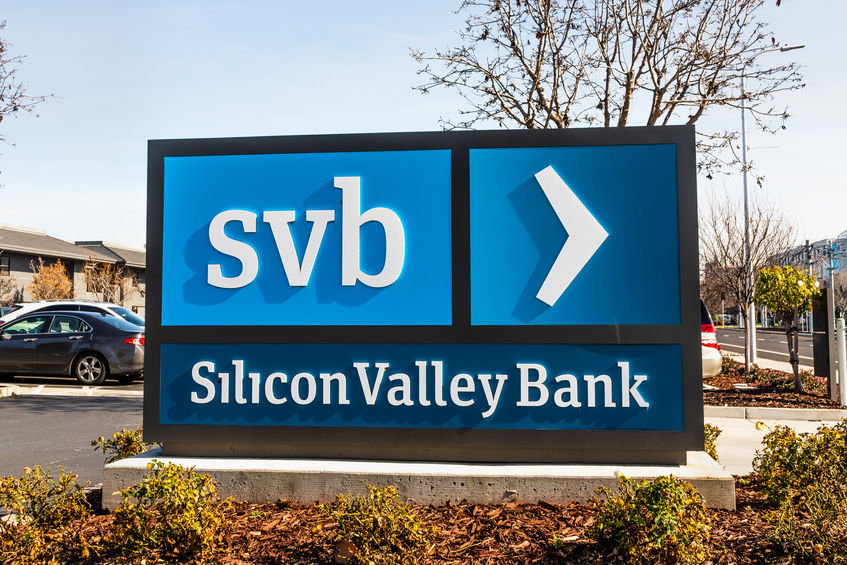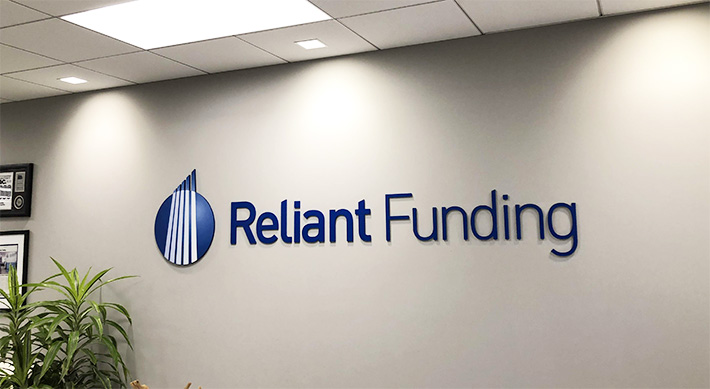Sean Murray is the President and Chief Editor of deBanked and the founder of the Broker Fair Conference. Connect with me on LinkedIn or follow me on twitter. You can view all future deBanked events here.
Articles by Sean Murray
SVB: ‘Send us your biz and we’re making new loans!’
March 14, 2023 Remember three minutes ago when Silicon Valley Bank was the 2nd largest bank failure in American history? No? We don’t either! According to SVB’s new CEO, the one installed by the FDIC, depositor money is not only protected but the bank is also in the process of ramping up its business!
Remember three minutes ago when Silicon Valley Bank was the 2nd largest bank failure in American history? No? We don’t either! According to SVB’s new CEO, the one installed by the FDIC, depositor money is not only protected but the bank is also in the process of ramping up its business!
What?
“If you, your portfolio companies, or your firm moved funds within the past week, please consider moving some of them back as part of a secure deposit diversification strategy,” wrote new SVB CEO Tim Mayopoulous on social media. “We are also open for business for any new customers. We are actively opening new accounts of all sizes and making new loans.”
In a six-paragraph plea for business, Mayopoulous mentions its lending business twice. “We are making new loans and fully honoring existing credit facilities,” he reiterated.
SVB “failed” on March 10th. Its shareholders were wiped out and its executives all fired. But that was Friday. These days, it’s a happily growing bank. So if you need a loan, you know where to go…
Idea Financial Upsizes its Credit Facility to $112M
February 23, 2023 In just eighteen months since Idea Financial closed on an $84M warehouse facility with the Specialty Finance Division of Synovus Bank and Hudson Cove Capital Management, the company has gotten it upsized to $112M and the term extended by another 3 years. Idea Financial provides small businesses with lines of credit while its sister company LevelEsq finances the cost of lawsuits mostly undertaken by lawyers that work on contingency.
In just eighteen months since Idea Financial closed on an $84M warehouse facility with the Specialty Finance Division of Synovus Bank and Hudson Cove Capital Management, the company has gotten it upsized to $112M and the term extended by another 3 years. Idea Financial provides small businesses with lines of credit while its sister company LevelEsq finances the cost of lawsuits mostly undertaken by lawyers that work on contingency.
Co-founders Larry Bassuk and Justin Leto say that the upsizing news is “a testament to our discipline and our focus on risk management.”
The company has around 50 employees, less than what might be expected, but Bassuk and Leto say that technology has helped make tremendous efficiency possible while emphasizing that they have a human underwriting team that reviews every single loan before it goes out.
Jayan Krishnan, Managing Director of Synovus Bank, said that they were “very happy to provide them with the growth capital they need.” Synovus is the senior debt in the arrangement. Krishnan said that they love to work with companies that are thoughtful, mindful, and conservative and that Idea fit that criteria.
Fred Wang, a Co-Founder and Partner at Hudson Cove, said his firm is pretty selective on mezzanine within the small business lending asset class but that Idea’s performance has been very strong and consistent. “We’ve gotten a very good feel for them as a management team,” Wang said.
Both Synovus and Hudson Cove are well-versed in the commercial finance space.
“We’re obviously growing and they’re happing to be growing with us,” said the two founders of Idea Financial. “We run our company risk management first and sales second.”
SoFi Pondering But Not Ready to Become Small Business Lender
February 8, 2023 “When the pandemic first started back in 2020, March time period, we were inundated with tons of small, medium businesses coming on to SoFi and trying to apply for PPP loans,” said Anthony Noto, CEO of SoFi in the company’s most recent quarterly earnings call. “We clearly don’t have small, medium lending. Now that we have a banking license, that is an area that we could go into, but we didn’t at that point in time.”
“When the pandemic first started back in 2020, March time period, we were inundated with tons of small, medium businesses coming on to SoFi and trying to apply for PPP loans,” said Anthony Noto, CEO of SoFi in the company’s most recent quarterly earnings call. “We clearly don’t have small, medium lending. Now that we have a banking license, that is an area that we could go into, but we didn’t at that point in time.”
Alerted to the possible opportunity, however, SoFi leveraged its Lantern technology during covid to send interested business borrowers to a marketplace of lenders, which produced favorable results.
“The demand, as a result of that, led us to realize that many of our members are operating small, medium businesses and that we could serve them on the commercial side as well,” said Noto.
Nevertheless, Noto said that small business lending was not on their agenda for 2023 unless there was a big economic recovery this year. But if and when it decided to go into the market, it feels confident that its cost of capital would be of great advantage. As a bank, SoFi can leverage customer deposits.
“So if we get to the point that our deposits are significantly higher than they are today, we can deploy them in many, many other ways to drive a great return for the company,” Noto said.
Another advantage is the organic interest in working with SoFi to begin with.
“If you follow us on any social media, it’s a constant request that we get from people to launch small, medium business checking and savings, small, medium business lending,” Noto noted.
Reliant Funding Shifts Gears
February 3, 2023 Reliant Funding has begun a sale of its portfolio, deBanked has learned, a move complemented by some material adjustments internally. For example, posts on social media have revealed that numerous members of Reliant’s staff are suddenly seeking new employment.
Reliant Funding has begun a sale of its portfolio, deBanked has learned, a move complemented by some material adjustments internally. For example, posts on social media have revealed that numerous members of Reliant’s staff are suddenly seeking new employment.
A source familiar with events taking place inside the company confirmed that Reliant is indeed right-sizing its team and that funding on balance sheet has paused. Due to its ability to get deals funded off balance sheet, however, January was actually the company’s strongest month ever for originations.
Market conditions and the rapid rise of interest rates may be related to the sudden shift at Reliant, which has been in operation since late 2008. At the time the Federal Funds Rate had dropped to 0% and it had remained exceptionally low until recently.
Regulators Seek to Shore Up Potential Hole in Commercial Financing Disclosure Rules
January 25, 2023 After a trade association sued the Commissioner of the California Department of Financial Protection and Innovation over its allegedly unlawful disclosure rules, regulators appear to be scrambling to cover their bases. In particular the SBFA, as plaintiff, has argued that California’s prescribed APR formulas are actually preempted by the federal Truth in Lending Act (TILA) and thus irrelevant.
After a trade association sued the Commissioner of the California Department of Financial Protection and Innovation over its allegedly unlawful disclosure rules, regulators appear to be scrambling to cover their bases. In particular the SBFA, as plaintiff, has argued that California’s prescribed APR formulas are actually preempted by the federal Truth in Lending Act (TILA) and thus irrelevant.
Within 24 hours of the lawsuit becoming public, a federal agency, the CFPB, coincidentally asked the public to comment on whether or not the disclosure law of a separate state (New York) should be preempted by TILA.
“The CFPB is requesting comment on whether it should finalize its preliminary determination that the New York law – as well as potentially similar laws in California, Utah, and Virginia – are not preempted,” the agency said.
It is of the CFPB’s opinion that such state laws are not preempted and it has proposed to codify such in an official ruling. On January 20th the Attorney General for the State of California praised the CFPB for this initiative.
“…if TILA were to preempt the CFDL’s commercial financing disclosures, there would be no required disclosures at all for commercial credit in California, undermining TILA’s purpose in promoting uniform information and eliminating protections for small businesses and entrepreneurs in California,” said AG Rob Bonta.
The disclosure rules in California went into effect on January 1st despite the lawsuit being filed in December. The SBFA did not attempt to obtain a temporary injunction so there was no anticipation of a delay. The only thing that has happened in the case thus far is that California has asked for an extension to answer the lawsuit. The State now has until February 21st to submit it. In the meantime, the comment period for the CFPB’s proposed rule ended on January 20th, which now potentially puts the agency on course to quickly invent a rule to head off the challenge in California and other states.
Marcus Ceases Its Lending Business, Admits They Tried to Do Too Much Too Quickly
January 23, 2023 It’s the end of an era. Marcus, an online consumer lending venture launched in 2016 by Goldman Sachs, is winding down its lending business. Rumors of the shift circulated around the media last month but last week Goldman Sachs made it official.
It’s the end of an era. Marcus, an online consumer lending venture launched in 2016 by Goldman Sachs, is winding down its lending business. Rumors of the shift circulated around the media last month but last week Goldman Sachs made it official.
“We started a process to cease offering new loans on the Marcus platform,” said Goldman CEO David Solomon. “We will likely allow the book to roll down naturally, although we are considering other alternatives.”
Solomon attributed the move to the firm reorganizing itself but elaborated further when pressed.
“…we tried to do too much too quickly,” Solomon said. “And of course, in the environment that we are in, it’s hard to go back when we started in that strategy 6 years ago. We obviously built the deposit business, the loan business, and we talked about a much broader platform and I think we came to the conclusion that there were some changes.”
Solomon added that in trying to do too much, it was affecting their execution and he conceded that they didn’t have “all the talent we had needed to execute the way we wanted.”
Left unsaid about Goldman’s original motivations was a desire to compete with LendingClub, who had blazed a massive trail with peer-to-peer lending and showed the world a market of potential untapped opportunity. The two firms went head-to-head against each other for consumers and LendingClub eventually ditched peers as a source of financing and later became a bank itself. The final destination for both companies brings closure to the twenty-teens where growth of an online lending business at any cost was all the rage.
Coincidentally, The Federal Reserve is now investigating Goldman Sachs’ use of appropriate safeguards in its Marcus lending division, according to the WSJ.
The Marcus online savings account product is reportedly remaining active.
New Info On The End of LoanMe
January 16, 2023 It was originally communicated as “market conditions.” That’s what NextPoint Financial, LoanMe’s parent company, announced in June 2022 as the reason that it was winding down LoanMe’s business. The news shocked the world because LoanMe had just been acquired by NextPoint for a price of more than $100M.
It was originally communicated as “market conditions.” That’s what NextPoint Financial, LoanMe’s parent company, announced in June 2022 as the reason that it was winding down LoanMe’s business. The news shocked the world because LoanMe had just been acquired by NextPoint for a price of more than $100M.
Now, after many delays, NextPoint has finally filed its 2021 financial statements, and with that more information about what happened with LoanMe.
Around the time it was being acquired (In Q1 2021), LoanMe transferred the majority of its loan portfolio to sub-servicers to “secure expected financial and operational efficiencies,” the report states, but “transition challenges negatively impacted loan performance and servicing costs.” The problems were allegedly so bad that in March 2022 they had to move the loan portfolio to yet another sub-servicer.
“LoanMe’s management’s attention was diverted from loan production to sub-servicer oversight,” the report states. This, when combined with lower than expected originations due to a competitive lending environment made for a challenging situation.
On May 9, 2022 LoanMe filed a lawsuit against loan servicer Amerifirst Home Improvement Finance LLC in Delaware Superior Court over alleged failures to live up to its loan servicing contract. Amerifirst filed counterclaims against LoanMe on November 3rd. The case is pending.
The tide of events had already overcome the company, however. On June 21, NextPoint announced that LoanMe would cease loan originations but would continue to service outstanding loans. LoanMe’s report attributes this final decision to an “elevated rate of charge-offs” and “a significant shortfall of cash being generated versus the amount required to fund the operations.”
Three months later, NextPoint decided to unwind LoanMe from its business altogether.
LoanMe originated both consumer and business loans. Its business loans ranged from 2-10 years. Business loan customers had an average FICO score of 692.
From Zero to $28 Million
January 12, 2023 Back in June 2022, Eddie DeAngelis was getting ready to launch QualiFi in a Philadelphia suburb. After having started in the industry as President and partner with Bizlender in 2013 and then founder and CEO of Amerifi, LLC in 2017 (later acquired by Nav Technologies Inc.), success for DeAngelis’ newest startup was bound to draw heavily on the experience he had gained throughout his career. But, times had changed a little.
Back in June 2022, Eddie DeAngelis was getting ready to launch QualiFi in a Philadelphia suburb. After having started in the industry as President and partner with Bizlender in 2013 and then founder and CEO of Amerifi, LLC in 2017 (later acquired by Nav Technologies Inc.), success for DeAngelis’ newest startup was bound to draw heavily on the experience he had gained throughout his career. But, times had changed a little.
“In my opinion, this is probably the hardest and most competitive over the last 10 years this business has ever been,” he told deBanked. “Every deal shopping around, they’re working with multiple brokers…”
QualiFi connects businesses with funding sources. Real estate loans, AR financing, PO financing, equipment financing, and term loans are among their core products. It’s not a revolutionary business model in that of itself. The key is in execution, which by any measure the company seems to be accomplishing quite well so far. In August alone, QualiFi closed 33 deals for a total of $2.4M in financing and continued the streak until November when it eclipsed $11.3M in just one month split across 57 deals.
In roughly less than seven months since launch, DeAngelis said they’ve surpassed $28M in closed deals. To be sure, DeAngelis doesn’t take all the credit for the impressive start. Jason Maury, a QualiFi partner and VP of Sales, has been instrumental in executing the company’s strategy, DeAngelis said. Part of that strategy he shared.
“99% of all our traffic is from inbound leads,” DeAngelis said. The company runs a variety of marketing campaigns that includes social media but nearly half is attributable to referral partners.
“We have banks, a couple of credit unions, and CPAs that we work with that send us some of their clients that are either maxed out on their line of credit or just simply can’t get approved from the bank,” he said.
The company doesn’t take any of those relationships for granted, which means QualiFi reps need to be qualified to take on their tasks.
 “We have an approximate five week on-boarding process for all new hires,” DeAngelis explained, adding that it’s one of the most intensive sales trainings out there. New people to the business must go through it before they get on the phone with potential customers. All of that training is on-site at the company’s office, not something that is offered remotely. Doing this business in person is something QualiFi puts a high value on as the team is expected to be in the office Monday-Thursday. Fridays are allowed to be remote.
“We have an approximate five week on-boarding process for all new hires,” DeAngelis explained, adding that it’s one of the most intensive sales trainings out there. New people to the business must go through it before they get on the phone with potential customers. All of that training is on-site at the company’s office, not something that is offered remotely. Doing this business in person is something QualiFi puts a high value on as the team is expected to be in the office Monday-Thursday. Fridays are allowed to be remote.
There’s a little more to it. DeAngelis said that “culture and the environment is another piece” and that leadership is about supporting everyone and keeping a team mentality.
“Even after they’re done their five week training, Jason and myself are always all over the floor,” DeAngelis said. “We’re very involved in the trenches day-to-day. We do ongoing support training once a week…”
All told, even with the current state of the economy, QualiFi anticipates an opportunity to help more business owners when they will probably need it most.
“We’re remaining pretty optimistic,” DeAngelis said. “As we’re going into an even more volatile economy in the new year, I think the banks are really going to be squeezing and not really looking to put too much money out there and take any risk at all. So I think that a lot of that business is going to come our way potentially. That’s what we’re hopeful for.”






























